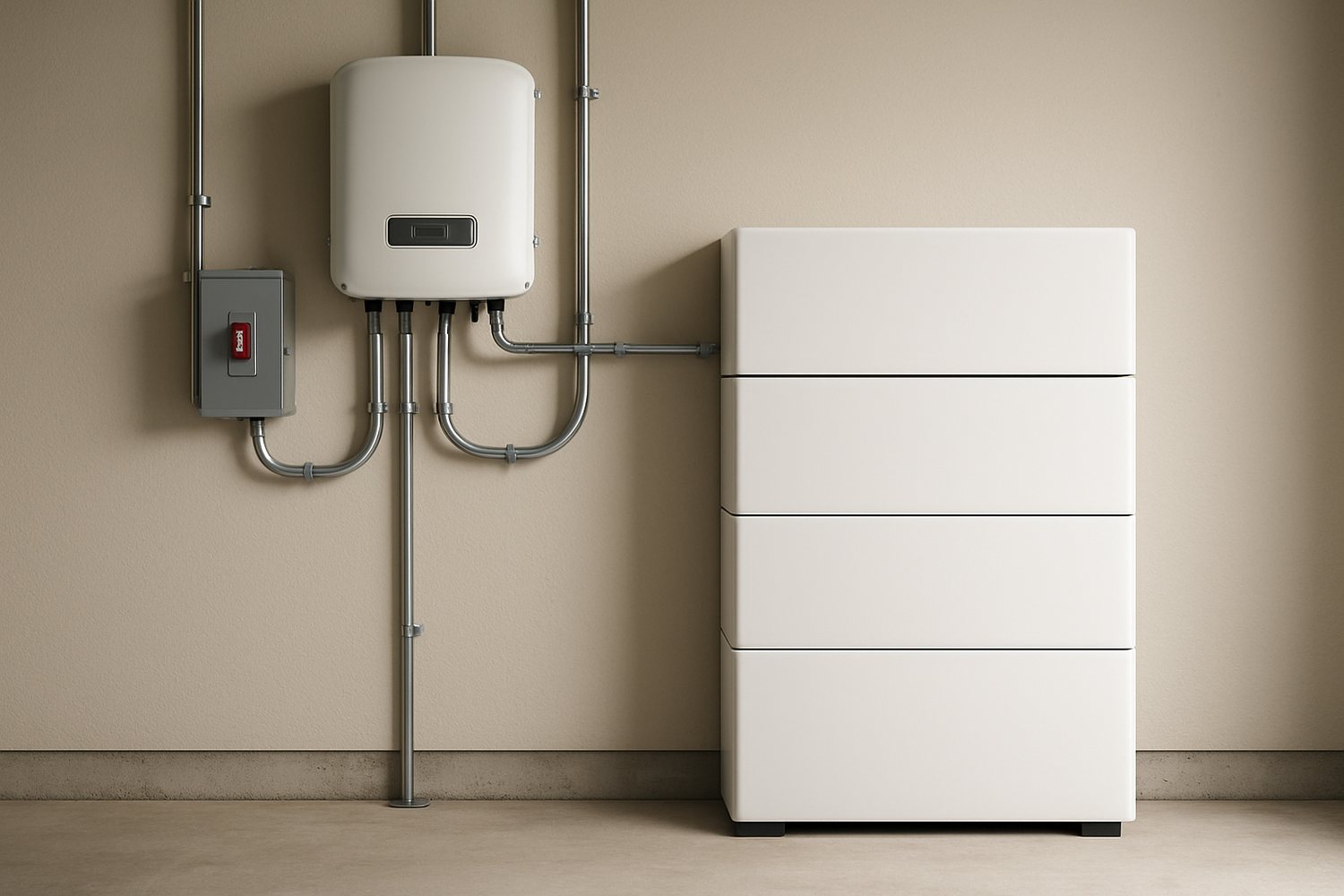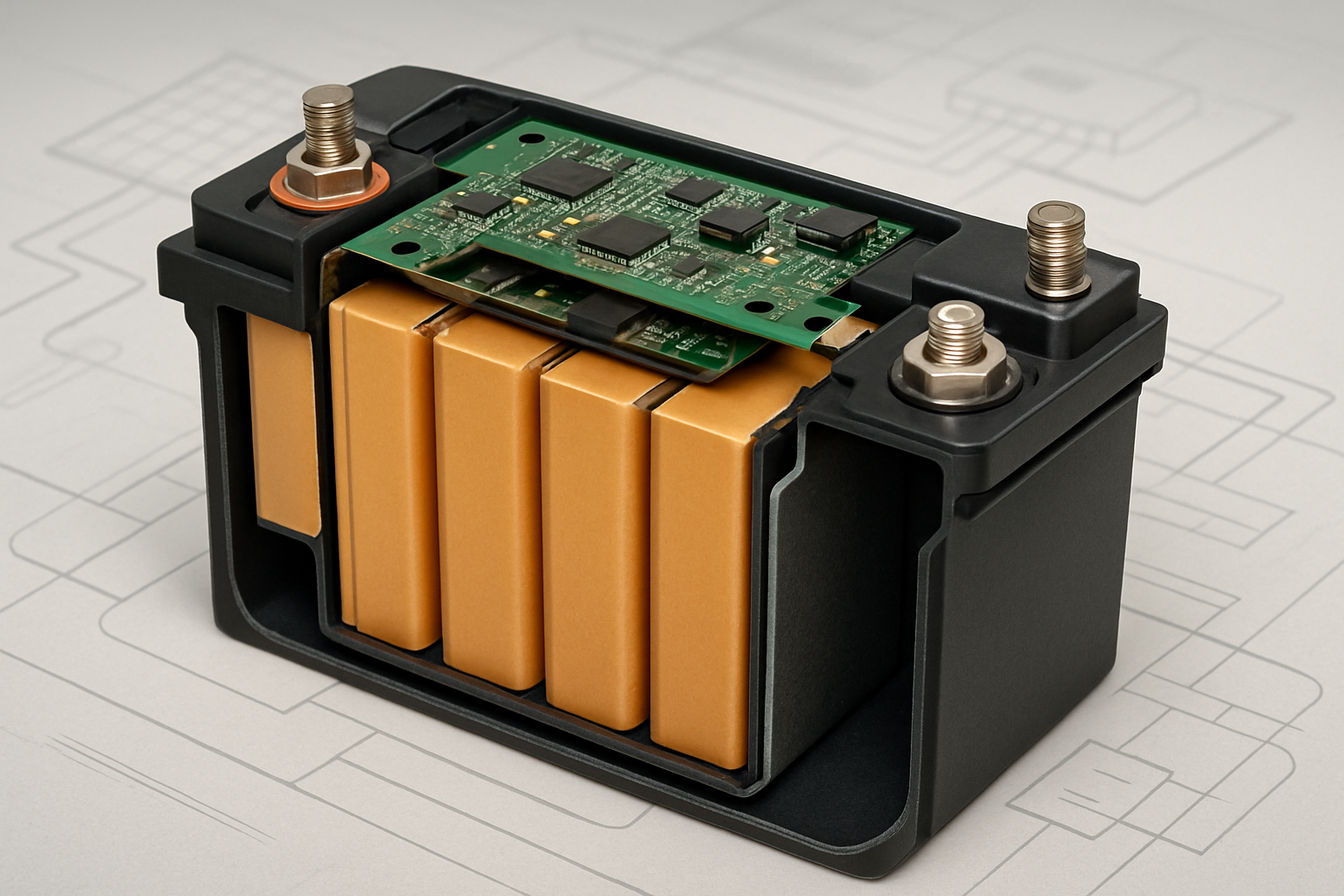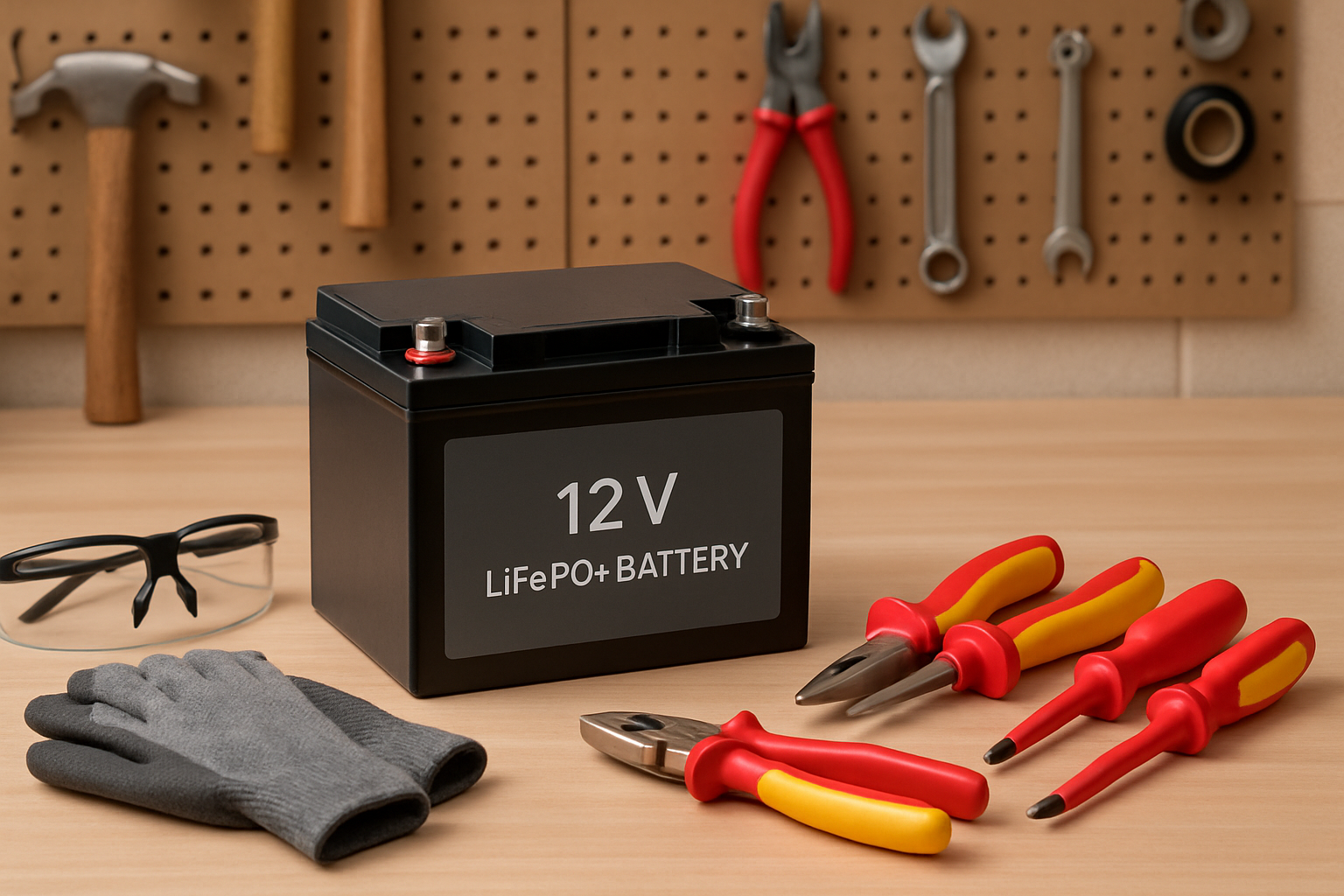As more households adopt solar power, battery storage systems have become a key component for achieving energy independence. When installed correctly, these systems are safe and reliable. However, installation errors can introduce serious fire risks. Understanding these potential pitfalls is crucial for ensuring the safety and longevity of your solar power system.
The Critical Role of Proper Installation for Battery Safety
A safe solar battery installation hinges on technical precision and adherence to established standards. The primary cause of battery fires is a phenomenon called thermal runaway, where a cell's temperature increases uncontrollably, leading to a chain reaction that can result in fire. While rare, the risk of thermal runaway is significantly heightened by installation mistakes. Following manufacturer guidelines and national electrical codes, such as the NEC, is not just a recommendation—it's a fundamental requirement for a safe system.
Mistake 1: Incorrect Wiring and Sizing
Using Undersized Cables
One of the most frequent and dangerous errors is using wires that are too small for the electrical current they need to carry. Undersized cables overheat under load, which can melt the wire's insulation and create a short circuit, a direct cause of fires. Always select cables with a gauge rated to handle the maximum continuous current of your system, factoring in a safety margin. The National Electrical Code (NEC) provides detailed tables to guide proper wire sizing.
Loose Connections
A connection that isn't properly tightened creates a point of high electrical resistance. This resistance generates intense heat, creating a 'hot spot' that can degrade components, arc, and ignite nearby flammable materials. Using a calibrated torque wrench to tighten all terminals to the manufacturer's specified values is essential. According to the 2014 NEC, ensuring proper termination is a mandatory step to prevent strain and corrosion at connection points. Regular inspections can also help identify any connections that may have loosened over time.
Mistake 2: Inadequate Ventilation and Spacing
Poor Airflow Around the Battery
Batteries naturally generate heat during charging and discharging cycles. Without sufficient airflow, this heat becomes trapped, raising the battery's internal temperature. Elevated temperatures accelerate battery degradation and dramatically increase the risk of thermal runaway. Installers must respect the manufacturer's clearance requirements, ensuring adequate space around all sides of the battery for natural convection to dissipate heat. New standards, like the UK's PAS 63100:2024, emphasize proper location and ventilation to minimize fire risk.
Ignoring Temperature Extremes
Both excessive heat and cold can damage a battery. High ambient temperatures can push a battery closer to its thermal limits, while charging a lithium-ion battery in freezing conditions can cause irreversible damage and internal shorting. Installing batteries in a location shielded from direct sunlight and extreme temperature swings, such as a well-ventilated garage or basement, is critical for both safety and performance.
Mistake 3: Neglecting Overcurrent Protection
Skipping Fuses or Circuit Breakers
Fuses and circuit breakers are non-negotiable safety devices. They are designed to interrupt the flow of electricity in the event of a short circuit or overload, preventing the catastrophic failure of system components and potential fire. An overcurrent protection device must be installed on all high-current conductors connected to the battery. For maximum safety, it should be correctly sized for the wire it protects and located as close to the battery terminal as possible.
Mistake 4: Mismatching System Components
Incompatible Battery and Inverter Settings
A solar inverter or charge controller must be precisely configured for the specific voltage and charging parameters of the connected battery. Applying the wrong charge profile—for example, using settings for a lead-acid battery on a Lithium Iron Phosphate (LiFePO4) unit—can lead to overcharging, which is a primary trigger for thermal runaway. Always verify the battery's technical data sheet and program the charging equipment accordingly.
Mixing Old and New Batteries
In a battery bank, all cells should be identical in chemistry, capacity, and age. Mixing old and new batteries, or even batteries from different manufacturing batches, creates an imbalance. The newer, stronger batteries can overcharge the older, weaker ones, leading to premature failure and a potential fire hazard. Always build a new battery bank with a matched set of new cells.
Mistake 5: Ignoring Manufacturer's Instructions
Every battery and inverter comes with a detailed installation manual for a reason. These documents contain critical, model-specific information regarding torque specifications, required clearances for ventilation, environmental limitations, and proper commissioning steps. Disregarding these instructions in favor of a generic approach is a recipe for problems. A careful read-through of the manual before starting is one of the simplest yet most effective ways to prevent installation errors.
Mistake 6: Improper Physical Handling and Mounting
Solar batteries are heavy and contain sensitive components. Dropping or mishandling a battery can cause internal damage that may not be immediately visible but can lead to a short circuit later. Furthermore, the battery must be securely mounted to a solid surface using appropriate hardware. An unsecured battery can shift or fall, leading to damaged cables, short circuits, and physical damage to the unit itself.
Mistake 7: Lack of a Proper Commissioning Process
A successful installation doesn't end when the last wire is connected. A thorough commissioning process is a final safety check to ensure everything is operating as designed. This involves verifying system voltages, testing all safety disconnects, checking inverter settings, and monitoring the first few charge and discharge cycles to identify any anomalies. This final step confirms that the system is not only functional but also safe for long-term operation.
Your Path to a Safer Solar Energy System
Avoiding these seven common mistakes is fundamental to ensuring your solar battery system is a safe, reliable source of clean energy. The complexity and potential hazards of this work underscore the importance of deep technical knowledge. Whether you are a seasoned DIYer or hiring a professional, prioritizing safety standards, following manufacturer guidelines, and performing diligent checks are the cornerstones of a successful installation. For a deeper understanding of what to expect from your system, exploring a reference on solar storage performance can provide valuable insights into efficiency and output. A well-installed system will provide peace of mind and energy independence for years to come.
Disclaimer: This information is for educational purposes only and does not constitute professional installation advice. Always consult with a qualified, licensed electrician and adhere to local building and electrical codes.
Frequently Asked Questions
Can I install a solar battery myself?
While it is possible for individuals with extensive electrical knowledge and experience, installing a solar battery involves high-voltage direct current and significant safety risks, including fire and electric shock. It is highly recommended to hire a certified professional to ensure the system is safe and compliant with all local regulations.
What is the safest type of solar battery?
Lithium Iron Phosphate (LiFePO4) batteries are widely considered one of the safest and most thermally stable lithium-ion chemistries available. Their chemical structure is more resistant to thermal runaway compared to other lithium chemistries like Nickel Manganese Cobalt (NMC), even under conditions of overcharging or physical damage.
How often should I inspect my solar battery system?
Performing a visual inspection every six months is a good practice. Look for any signs of corrosion on terminals, physical damage to the battery case or cables, and ensure all connections appear tight. It is also wise to have a professional installer conduct a more thorough system check-up every one to two years.
What are the signs of a failing solar battery?
Key indicators of a failing battery include a significant reduction in its capacity to hold a charge, the system shutting down more frequently than usual, visible swelling or cracking of the battery casing, or persistent error codes from the battery management system (BMS).





Leave a comment
All comments are moderated before being published.
This site is protected by hCaptcha and the hCaptcha Privacy Policy and Terms of Service apply.